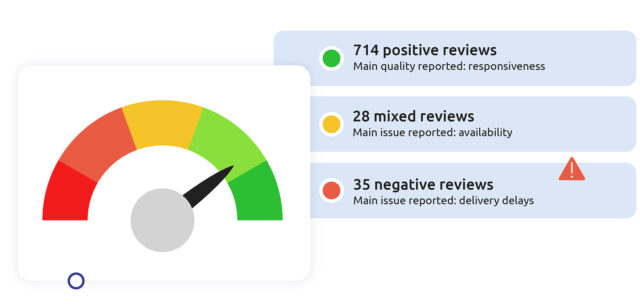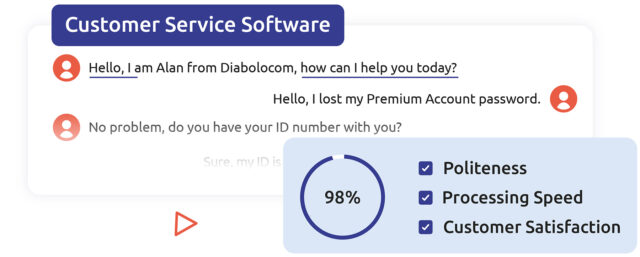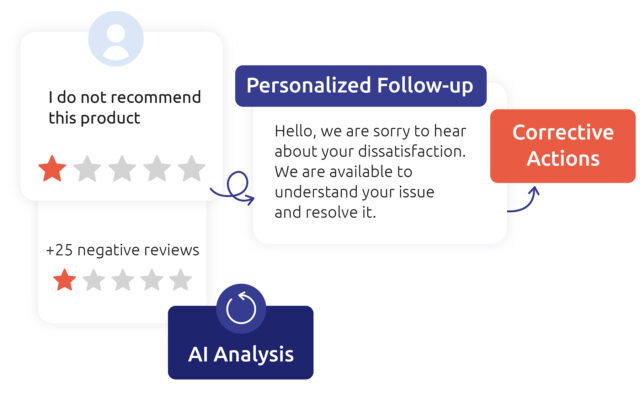CSAT
CSAT is a key indicator in any customer service strategy. Used to measure customer satisfaction in real time, it enables you to maintain a good customer experience and continuously improve your products and services.
What is CSAT?
CSAT stands for “Customer Satisfaction”. CSAT measures customer satisfaction immediately after an interaction with the company. Methods such as online or in-store questionnaires can be used to assess CSAT.

Benefits of CSAT
Real-time satisfaction measurement
CSAT provides real-time information on customer satisfaction. This enables the company to detect potential problems and react quickly. For example, if in-store CSAT drops, the company can identify the cause (staff shortages, long checkout times, etc.) and solve the problem. If the company notices a high level of satisfaction, it can also focus on what contributes to it, and train its employees in these qualities.

Ease of use for customers
CSAT collects direct feedback from customers to find out how they feel. By using short formats and simple questions, companies maximize responses. CSAT results are also easy to analyze and track over time.

A marketing argument
Measuring CSAT is not only useful for internal teams, but also for corporate communication. When the results are satisfactory, the brand can use CSAT to demonstrate the quality of its customer service. For example, it’s common practice to display the rate of satisfied customers on the company’s website and communication media.

Challenges of CSAT
Lack of information
To maximize response rates, CSAT is usually measured by a very short questionnaire and closed questions. The results obtained are in the form of numbers, and qualitative information (comments and customer feedback) may be lacking to understand what contributes to CSAT. To obtain more information, companies may wish to add a “Comments” section, or use a detailed questionnaire with a sample of customers.
Response bias
CSAT is often measured immediately after an interaction, which increases response rates. However, this can also lead to a lack of hindsight on the part of respondents. It is common, for example, for a customer to respond very positively after a good in-store experience, but for this not to reflect long-term satisfaction and loyalty.
Using CSAT in customer service
How do I use CSAT?
To use CSAT, the first step is to define the objective that this indicator will enable you to achieve, such as improving your customer relations or increasing customer loyalty.
You then need to define the channels on which you will measure CSAT, which generally include telephone and digital channels (email, chat, social networks…).
For reliable data, use customer service software that automates the sending of satisfaction questionnaires immediately after interaction. Diabolocom integrates this functionality and centralizes CSAT results on customizable dashboards, to help you continuously improve your customer service.

Why measure customer satisfaction?
Measuring CSAT enables companies to monitor their customers’ satisfaction levels on an ongoing basis. The results provide companies with valuable information for :
- Understand customers’ expectations, identifying the drivers of satisfaction and dissatisfaction.
- Continuously improve customer relations by analyzing the strengths and weaknesses of customer interactions.
- Build customer loyalty by highlighting the strengths of services or products, and by making follow-up calls to dissatisfied customers.

FAQ
Why measure customer satisfaction?
Measuring CSAT enables companies to monitor their customers’ satisfaction levels on an ongoing basis. The results provide companies with valuable information for :
- Understand customers’ expectations, identifying the drivers of satisfaction and dissatisfaction.
- Continuously improve customer relations by analyzing the strengths and weaknesses of customer interactions.
- Build customer loyalty by highlighting the strengths of services or products, and by making follow-up calls to dissatisfied customers.
What are the 3 main indicators for monitoring customer satisfaction?
A customer service department uses 3 main indicators to track customer satisfaction:
- CSAT (Customer Satisfaction Score), which measures satisfaction after an interaction or purchase.
- The NPS (Net Promoter Score), which assesses the likelihood of customers recommending the company to others.
- The CES (Customer Effort Score) measures the effort required by the customer to obtain a product/service or contact the company.
To facilitate the measurement and monitoring of these 3 indicators, call centers can use a solution integrating quality monitoring and artificial intelligence.
How do you measure satisfaction?
CSAT is the basis for calculating the satisfaction rate. Once the CSAT level has been obtained from a questionnaire, the following calculation is applied: (Number of satisfied customers / Total number of customers surveyed) x 100. A customer is generally considered satisfied if his or her score is above average.
The satisfaction rate result is then expressed as: x% of our customers are satisfied [with our products/services/customer service].